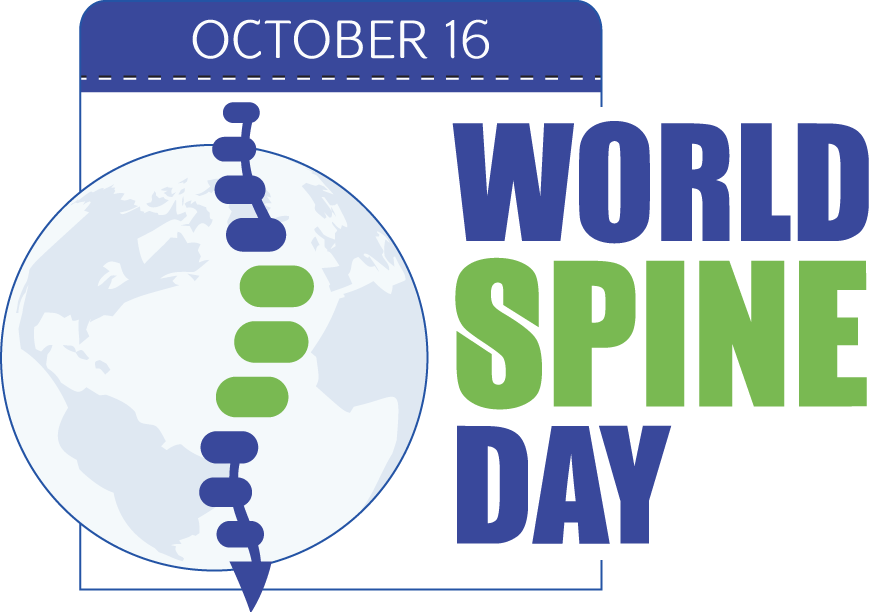
Countdown to World Spine Day – October 16 – Four Days to Go
The relationship between your spine, nervous system and health
Your spine is made up of 26 separate bones (24 vertebrae, the sacrum and the coccyx) and is interconnected with nerves, muscles, tendons and ligaments. Any of these can become damaged which can cause symptoms, nerve damage or loss of mobility. Your spine houses the spinal cord which is part of the central nervous system and connects your brain to your body.
Your central nervous system, made up of your brain and nerve system, coordinates the function of all tissues, organs and systems of your body, and relates your body to it’s environment.
Your nervous system is vital to you, the function of your body and your health. Essentially, you live your life through your nervous system.
Your spine, your posture and your health?
Because of the relationship between your spine and nervous system, the movable spine can affect the nervous system causing disruption to optimal function. This is referred to as vertebral subluxation.
Your posture can give some insight into the health of your spine, and changes in posture can have a negative effect on your health in general. Several studies have found that a change in posture has been correlated to a decrease in physical functioning and quality of life, is a contributing factor to chronic diseases such as hypertension, heart disease and renal disease, and is a predictor of longevity.
Another study by the International Spine Study Group found that proper alignment of the spine had a positive impact on the level of disability experience and health related quality of life.
Use our downloadable Healthy Spines Check List to find out if you have any underlying signs of vertebral subluxation.
References:
-
Dorland’s Medical Dictionary
-
Protopsaltis TS, et al. The Lumbar Pelvic Angle (LPA), the Lumbar Component of the T1 Pelvic Angle, Correlates with HRQOL, PI-LL Mismatch and it Predicts Global Alignment. Spine (Phila Pa 1976). 2017 Jul 24.
-
Kado, D., Huang, M., Barrett-Connor, E., & Greendale, G. (2005) Hyperkyphotic Posture and Poor Physical Functional Ability in Older Community-Dwelling Men and Women: The Rancho Bernardo Study. Journals of Gerontology: Biological Sciences, 60(5), 633-637
-
Kado, D. et al. (2009) Hyperkyphosis predicts mortality independent of vertebral osteoporosis in older women. Annals of Internal Medicine 150:681-687
-
Katzman et al. (2010) Age-Related Hyperkyphosis: Its Causes, Consequences, and Management. Journal of Orthopedic and Sports Physical Therapy, 40(6) 352-360
-
https://www.bodyzone.com/
strengthening-posture-affects- longevity/ -
https://
americanpostureinstitute.com/ the-killer-impact-of- hyperkyphosis-3-must-read- research-articles-2/


